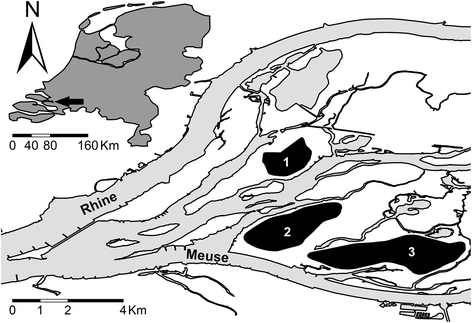 Round goby is generally accepted to be a typical benthic dwelling fish species both in its native and invasive ranges. Nevertheless, mid-water night trawling in the Biesbosch reservoirs (The Netherlands) identified pelagic occurrence of invasive round goby juveniles, which is the first observation of pelagic utilization in Europe. Subsequent diet analysis revealed the presence of benthic and also pelagic zooplanktonic prey in the digestive tracts of investigated fish, which further confirmed active feeding in the pelagial. Round goby juveniles almost completely avoided the surface water layer and their maximum density always occurred below 6 m in all reservoirs. The observed size spectrum (8–58 mm standard length) included the largest pelagic round goby to ever be mentioned in the scientific literature. Our data also showed that round goby prevailed over other species soon after its invasion into the reservoirs, with native species disappearing from the fry community. This study documents the first evidence of the pelagic occurrence and feeding of round goby juveniles, and confirms the importance of pelagic habitats for early stages of this invasive species in European lentic systems.
Round goby is generally accepted to be a typical benthic dwelling fish species both in its native and invasive ranges. Nevertheless, mid-water night trawling in the Biesbosch reservoirs (The Netherlands) identified pelagic occurrence of invasive round goby juveniles, which is the first observation of pelagic utilization in Europe. Subsequent diet analysis revealed the presence of benthic and also pelagic zooplanktonic prey in the digestive tracts of investigated fish, which further confirmed active feeding in the pelagial. Round goby juveniles almost completely avoided the surface water layer and their maximum density always occurred below 6 m in all reservoirs. The observed size spectrum (8–58 mm standard length) included the largest pelagic round goby to ever be mentioned in the scientific literature. Our data also showed that round goby prevailed over other species soon after its invasion into the reservoirs, with native species disappearing from the fry community. This study documents the first evidence of the pelagic occurrence and feeding of round goby juveniles, and confirms the importance of pelagic habitats for early stages of this invasive species in European lentic systems.
Keywords: Biesbosch reservoirs; fish community composition changes; fry trawling; goby fish; invasive species; length distribution; vertical distribution
